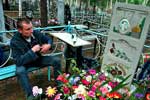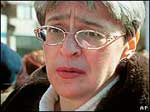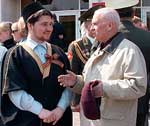Part 2 of Bob Woodward excerpts, Washington Post:
On July 15, 2004, Herbits sat down at his computer and wrote another memo, a scathing seven-page report titled “Summary of Post-Iraq Planning and Execution Problems.” Though he discussed the postwar planning and policies, and the tenure of L. Paul Bremer III as head of the Coalition Provisional Authority, his real target was his friend of 37 years. The memo listed a series of tough questions:
· “Who made the decision and why didn’t we reconstitute the Iraqi army?”
· “Did no one realize we were going to need Iraqi security forces?”
· “Did no one anticipate the importance of stabilization and how best to achieve it?”
· “Why was the de-Baathification so wide and deep?”
“Rumsfeld’s style of operation,” Herbits wrote, was the “Haldeman model, arrogant” — a reference to President Richard M. Nixon’s White House chief of staff, H.R. “Bob” Haldeman.
Here.


































